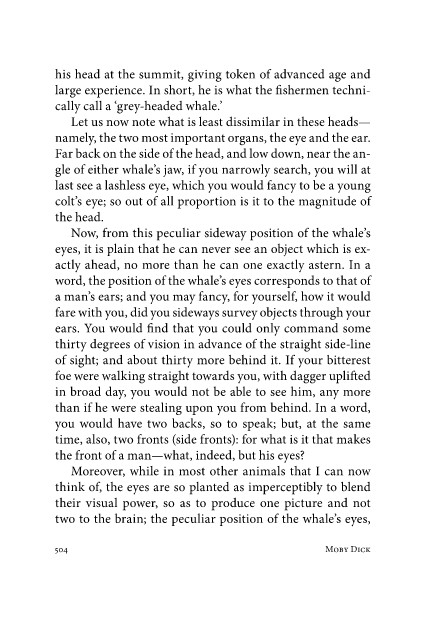Page 505 - moby-dick
P. 505
his head at the summit, giving token of advanced age and
large experience. In short, he is what the fishermen techni-
cally call a ‘grey-headed whale.’
Let us now note what is least dissimilar in these heads—
namely, the two most important organs, the eye and the ear.
Far back on the side of the head, and low down, near the an-
gle of either whale’s jaw, if you narrowly search, you will at
last see a lashless eye, which you would fancy to be a young
colt’s eye; so out of all proportion is it to the magnitude of
the head.
Now, from this peculiar sideway position of the whale’s
eyes, it is plain that he can never see an object which is ex-
actly ahead, no more than he can one exactly astern. In a
word, the position of the whale’s eyes corresponds to that of
a man’s ears; and you may fancy, for yourself, how it would
fare with you, did you sideways survey objects through your
ears. You would find that you could only command some
thirty degrees of vision in advance of the straight side-line
of sight; and about thirty more behind it. If your bitterest
foe were walking straight towards you, with dagger uplifted
in broad day, you would not be able to see him, any more
than if he were stealing upon you from behind. In a word,
you would have two backs, so to speak; but, at the same
time, also, two fronts (side fronts): for what is it that makes
the front of a man—what, indeed, but his eyes?
Moreover, while in most other animals that I can now
think of, the eyes are so planted as imperceptibly to blend
their visual power, so as to produce one picture and not
two to the brain; the peculiar position of the whale’s eyes,
0 Moby Dick

